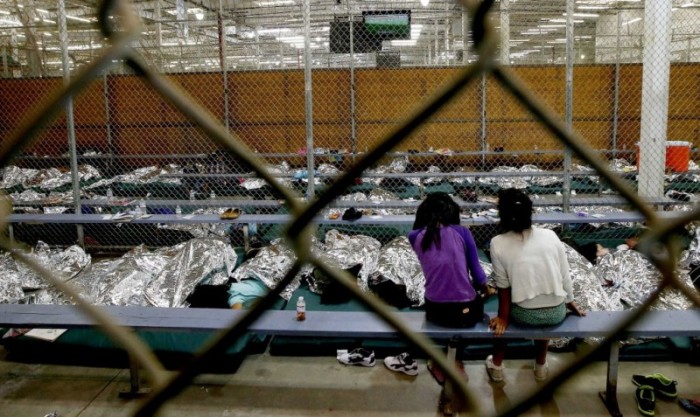The Border Crisis: A Better, Cost-Effective Option for Unaccompanied Minors

We have all seen the news and heard the stories – tens of thousands of unaccompanied minors are filtering through Mexico and crossing our southern borders. By the time they reach U.S. soil, many have been abandoned, abused, and exploited.
They are children – not adults who have made informed choices to enter the U.S. illegally. They are children, and everything we stand for as a country calls out for us to protect them. We don't turn our backs on children. Compassion? Absolutely. But it's compassion that is played out in a way that truly is in the best interest of the children.
Most of the children who stay in the U.S. will pour into an already overwhelmed child welfare system, a system currently caring for over 400,000 children. A system already in crisis. Once we take them in, the one thing of which we can be certain is that the children will not receive better lives here.
They will fail, because that's what usually happens to orphaned children.
Our society fails them, and they fail. More than 24,000 children age out of the American foster care system every year, and it is at the point of aging out that the implications for the kids get especially frightening. Studies show that somewhere around 12 percent of these children will take their own lives before they reach 18. Girls who have been orphaned are 10 times more likely to sell their bodies to survive than girls in stable families; some studies have the percentages of orphaned girls becoming prostitutes as high as 60 percent. A study in New York found that 75 percent of sexually exploited minors have spent time in foster care. Former foster children are three times more likely to be living in poverty and fifteen times less likely to have finished college. Sixty-six percent of them will be homeless, go to jail, or die within one year of aging out of foster care. And for children in long-term residential care, the numbers often rack even worse.
This is the better life we promised the children?
The immediate cost of caring for the children crossing our border is staggering. We spend $259 per day for each child in an immigration detention center. If we move them to foster care, that cost is $2,500 per month. Caring for children in long-term residential settings can easily run $90,000 per year per child. And yet, no matter how much money we throw at the problem, the children fail.
These costs encompass only the immediate financial outlays. The truth is: orphan problems are always multi-generational. Add 50,000 children to the system today, and factor in the subsequent generations who will almost certainly also fail: 150,000 in the next generation, and 450,000 in the third . . . The result is a burgeoning and dependent subclass of society for whom the cost of caring is absolutely staggering.
But there may be an answer. At the very least, an alternative that offers the possibility of success.
Multiple studies have shown that comprehensive in-country care can change the course of the lives of such children. For a fraction of the per-child cost that we will spend on care once the children enter the U.S. system – with an almost guaranteed outcome of failure — we can instead provide transformational care for them in their own countries. There are hundreds of U.S.-based or -connected NGOs currently working throughout Central America who are making a difference for kids just like the ones streaming across our borders. They provide safe, healthy homes, education, vocational training, and aging-out programs with remarkable metrics of success. Children in these programs make it—and they do so in their own countries and societies, in their own cultures. Perhaps most important is that as they graduate and are integrated into the communities from which they came, they begin transforming those same communities. Instead of perpetuating cycles of dependencies, they help become the role model for cycle interruption.
Is every child in these residential centers successful upon graduation? Of course not, but the better programs do an exceptional job of transitioning mortal-risk children into young adults who are employed and in stable living situations. For example, at Fundacion Exodo, a small residential care center in San Salvador, total care for children abandoned to the streets or trafficked in the city costs only $400 per month, but their kids are successful when they graduate and, instead of fostering another round of dependency, they actually become assets in their communities.
A much more cost-effective policy for the U.S. – in both the short and the long term — is to fund in-country organizations. The mechanisms are already in place, the organizations are already doing the work, but they are simply not prepared for the sheer numbers of children overwhelming their systems. Strategic investment in these organizations, and a well-considered media campaign communicating to Central Americans what we are doing, will have an immediate and profound impact on the northward flow of children. Investing wisely will buy the U.S. tremendous goodwill among our neighbors, and – also very important – allow our border enforcement agencies to focus their resources on protecting our country rather than being child-care practitioners.
Do we have to act compassionately toward these children? Of course we do, but always in ways that positively change their trajectories rather than perpetuating cycles of dependence. We stem this tide – which will inevitably overwhelm our already overburdened U.S. care system –not by the building of fences, but by cutting it off at its source.
Resource: http://www.jimcaseyyouth.org/sites/default/files/documents/Cost%20Avoidance.pdf



























